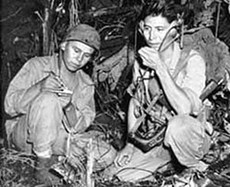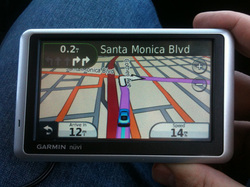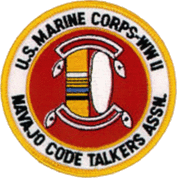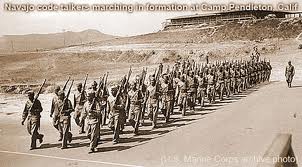- Home
- Videos
- Links
- Working with Interpreters
- Favorite Products
-
Newsletters
- December 2017
- December 2014
- June 2014
- March 2014
- December 2013
- November 2013
- October 2013 Newsletter
- July 2013 Newsletter
- June 2013 Newsletter
- March 2013
- February 2013
- January 2013
- December 2012
- November 2012
- October 2012
- September 2012
- August 2012
- July 2012
- June 2012
- May 2012
- April 2012
- March 2012
- February 2012
- January 2012
- November 2011
- October 2011
- September 2011
- August 2011
- July 2011
- March 2011
- February 2011
- January 2011
- October 2010
- September 2010
- May 2010
- April 2010
- March 2010
- September 2009
- May 2009 Remastered
- April 2009 Remastered
- February 2009 Remastered
- Healthy Body and Soul
- Upcoming Seminars
- More...
- COVID info for Medical interpreters
October 2013 Newsletter
In this Edition:
Healthy Eating: Where to Begin?
Working with Interpreter Agencies
Etymology of the Work Arraignment
To Translate Word for Word: An Oxymoron?
The Navajo Code Talkers
Best GPS to Avoid Being Late or Lost
My 2 Days in the Washington Courts
The Science Behind Speed Limits
This Month's Favorite Links
Healthy Eating: Where to Begin?
Working with Interpreter Agencies
Etymology of the Work Arraignment
To Translate Word for Word: An Oxymoron?
The Navajo Code Talkers
Best GPS to Avoid Being Late or Lost
My 2 Days in the Washington Courts
The Science Behind Speed Limits
This Month's Favorite Links

It was very exciting to see you on Friday. With our busy schedules we hadn't been able to meet since July. Grettel, Richard, Alina, Carlota, and newly approved interpreter Magdalena were at the Cafe. We talked about working with interpreter agencies. Representatives of a local top-notch interpreter agency took time out of their busy schedules to complete a questionnaire I sent them with the purpose of obtaining information on how agencies work, how they hire interpreters, how they assess interpreters' ability and performance, etc. The questionnaire is in this newsletter.
Richard brought a book he was reading. He said it was very interesting and recommended we read it. The title was "When You Catch an Adjective, Kill It: The Parts of Speech, for Better And/Or Worse" by Ben Yagoda. From it, we talked about the many different functions of the term O.K. Grettel researched the etymology of the term. There seem to be many stories about the origin of OK, including one involving candidate Van Buren's nickname, Old Kinderhook, and a false tale of a previous American president that couldn't spell. You can read about 'OK' in the article "How 'OK' Took Over the World."
Magdalena was asked what new or different terminology she heard in the courts, either being used by defendants or interpreters, and she mentioned a few such as 'one-way street', 'driving the wrong way', and 'yield'. Carlota shared information about traffic signs in Argentina and compared the symbols and words with Grettel's signs from Costa Rica and Magdalena's knowledge from Colombia. It was interesting to see how such public language can be so different from one country to another. We also spoke about the etymology of the word 'arraignment' and a lot more. We had a good meeting. I hope to see you on the third Friday of November! Take care and Happy Halloween.

Eating Healthy-Where to Begin Eating balanced, healthy meals keeps the blood nourished. Hormones, vitamins, minerals, and other vital elements are necessary to maintain a strong, flexible, and balanced body and brain. Excesses and deficiencies alter not only the psychical aspects of the body but also affect mood, memory, behavior, energy level, attention, and cause anxiety. It is important to understand the importance of obtaining nourishment through food. We enjoy eating and we want to eat in a healthy way, but sometimes we don't even know where to begin. Sometimes we must remove items from our diet due to an illness, risk of disease, or undergoing treatment. When we feel uncomfortable with how we look or if we feel we have a few extra pounds, we automatically put ourselves on a voluntary diet. But don't just remove everything from your diet that you believe is harmful. Add healthy food as well. It is easier and less stressful to add healthy items to your diet than to constantly deprive yourself of things you love but believe are bad for you; you may crave them even more. This is a normal psychological reaction. Remember that every person needs to tailor their diet to their condition and lifestyle. A diet that works for one person may not work for another. Athletes need more carbohydrates than sedentary people. Red meat and legumes are consumed more in areas of cold weather while raw vegetables and lighter meats and seafood are usually consumed in warm areas. The best way to know what diet is best for you is to consult with a nutritionist or dietitian. These professionals create profiles based on each person's condition, lifestyle, food preferences, culture, etc. and suggest meals and guidelines (and sometimes also vitamins and supplements) that will best benefit you. In the meantime, here are some things to consider if you want to tweak your diet and start to eat a little healthier day by day: - If you are overweight, see your doctor. You may have other problems associated with being overweight or you may have a hormonal imbalance that is making your weight increase. Sometimes, we just need to eat less food. If you eat out, be aware that some restaurant's portions are huge and sometimes it's better to share an entree or take leftovers home, have an appetizer as a meal, a salad & soup, or a combination of something with a half portion. - Reduce your consumption of refined sugar. If you have a sweet tooth and like to have dessert, do not consume a sweet drink with your meal. Have club soda or water instead. If you enjoy sitting down for coffee and a pastry, have your coffee without sugar or drink something else like water, plain kefir, low-fat soy milk, almond milk, or cow's milk. - Look for breads with whole grains in order to reduce your consumption of refined flour. If you eat bread every day, choose flatter breads such as toast instead of rolls. Try to reduce the times you consume bread in one week and remember that pizza, naan, bagels, sandwiches, croissants, English-muffins are all made with flour and yeast so they are considered bread. - Drink water. Soft drinks, juices, and teas probably have sugar, caffeine and lack minerals. Remember that if you have a urinary tract infection, many soft drinks, juices, and teas affect the urinary system making symptoms worse. - Try to prepare meals at home. - Eat healthy protein with less fat and less condiments. Choose broiled or grilled chicken or fish instead of fried. Choose restaurants that cook their food to-order rather than restaurants that deliver food fast. Ask for your sandwich "on the plate" instead of on a bun. - Stay relaxed, walk, and be positive. - Try to discover if you may be a stress-eater, nervous eater, angry-eater, etc. You may not be any of these, but sometimes very balanced and disciplined people suddenly gain 3 pounds and they don't know why. - If you don't want to eat it, don't buy it. Clean out your pantry and refrigerator of food you want to avoid. Throw them away. When you go to the market, do not purchase these items. If you have children, you are responsible for their nutrition and this includes grocery-shopping. Keep the peace at home by giving your family choices you will be happy with. - Eat at least one meal at the table every day with your family. 
THE ARRAIGNMENT According to Black's Law Dictionary Free Online Legal Dictionary 2nd Edition, to arraign, in criminal practice, is to bring a prisoner to the bar of the court to answer the matter charged upon him in the indictment. The arraignment of a prisoner consists of calling upon him by name and reading to him the indictment, (in the English tongue,) and demanding of him whether he be guilty or not guilty, and entering his plea. In old English law, to arraign is to order, or set in order; to conduct in an orderly manner; to prepare for trial. The arraignment is usually the first step in a criminal procedure in which a person accused of something comes before a judge in court. At this hearing, the person is informed of his or her charges and rights. This hearing is required by the Sixth Amendment to the United States Constitution as a protection against authorities holding the accused in custody for an extended period without telling them the charge or charges. The origin of the term ARRAIGNMENT is from Old French araisnier (verb) based on the Latin term ad which means ‘to’ + raisnier which means ‘reason or account.’ 
t
The Navajo Code Talkers Cryptography is the study and analysis of coding methods. Secret codes were extensively used in times of war to avoid communications of one country from being understood by the enemy. By World War II, manual, mechanical, and electromechanical cipher machines were being widely used. During World War II the most important event related to cryptography was probably the successful decryption of the "Enigma" cipher by the Allies of WW2. This was accomplished by mathematician Marian Rejewski of the Polish Cipher Bureau who cracked the code in December of 1932. The techniques and insights were then delivered to the French and the British just before the eruption of the war in 1939. The decryption of the “Enigma” cipher allowed the Allies to read important parts of German radio communications, creating an invaluable source of military intelligence throughout the WW2. The project was eventually called “Ultra.” The Germans were successful in code-breaking during World War II. One of their most important decryption was the breaking the British Naval Cipher No. 3. This enabled the Germans to track and sink convoys during the Battle of the Atlantic. It was “Ultra” intelligence that finally persuaded the British admiralty to change their codes. The Japanese, who intended to conquer China, joined forces with Nazi Germany, forming the “Axis Powers” (Germany, Japan, and later Italy.) The United States, who had significant political and economic interests in Eastern Asia, was alarmed by the moves of the Japanese. The U.S. increased military and financial aid to China, began to strengthen its military power in the Pacific, and cut off shipments of oil and other raw materials to Japan. The United States entered into World War II after the attack on Pearl Harbor on December 7, 1941. Japanese intelligence experts broke every code the US military formulated. The Japanese were able to anticipate American actions at an alarming rate. With plenty of fluent English speakers at their disposal, the Japanese sabotaged messages and issued false commands to ambush Allied troops. To resist this, the military created more and more complex codes. Eventually, the military leaders at Guadalcanal had no choice than to complain that sending and receiving these codes required hours of encryption and decryption, sometimes up to two and a half hours for one single message. They needed a better way to communicate. Phillip Johnston, a civilian living in California, learned of the crisis. Son of a Protestant missionary, Johnston had grown up on a Navajo reservation and was fluent in their difficult language. Phillip Johnston realized that since the Navajo language had no alphabet and was almost impossible to master unless learned early in life, it had great potential in being an indecipherable code. Plus, not many outsiders could speak Navajo; as a matter of fact, there were less than 30 non-natives fluent in this tongue, and none of them were Japanese. At the start of 1942, Johnston met with Major General Clayton B. Vogel, the commanding general of the Amphibious Corps, Pacific Fleet, (US Marine Corps) and his staff to convince them of the value of the Navajo language as a cipher. Johnston staged tests under simulated combat, demonstrating that the Navajo people could encode, transmit, and decode an English-language message consisting of 3 lines in 20 seconds. Machines of the era required 30 minutes to perform the same task. Major General Vogel was convinced and recommended that the Leader of the Marine Corps recruit 200 Navajos. An elite unit was quickly formed. Johnston recruited 29 Navajo Code Talkers (today, reverently referred to as the "original 29".) Even though by 1945 five hundred and forty Navajos had served as U.S. Marines, the first group was the one who conceived the code. They were 29 young Navajo men, some just boys, and most of them had never been away from home. Some lacked birth certificates, so it was impossible to verify their ages. After the war it was discovered that recruits as young as 15 and as old as 35 had enlisted. The Navajo code talkers took part in every assault the U.S. Marines conducted in the Pacific from 1942 to 1945. They served in all six Marine divisions, Marine Raider battalions, and Marine parachute units transmitting messages by telephone and radio in their native language. The Japanese were highly skilled code-breakers but they were never able to crack the code. The Navajo Code Talkers even confused a Navajo soldier who was being forced to listen to the jumbled words of “talker” transmissions after being taken prisoner in Bataan (Philippines.) The code that was created by the original 29 Navajo code talkers was as ingenious as it was effective. It began with approximately 200 terms. The Navajo men had to learn military terms and all code-words had to be memorized during training. The code consisted of native terms associated with the military terms they resembled. For example, the Navajo word for turtle meant "tank," and a dive-bomber was a "chicken hawk." English words could be spelled using certain Navajo terms assigned to English words that represented individual letters of the English alphabet. This was effective as a code because the Navajo language has no alphabet. For instance, "Wo-La-Chee" means "ant," and would represent the letter "A". Using this method, the Navajo Code Talkers could quickly and concisely communicate with each other in a manner incoherent even to civilian Navajos. Once trained (military boot camp then Camp Pendleton) the Navajo Code Talkers were sent to Marine divisions in the Pacific theater of WWII. Despite initial skepticism by commanding officers, the Navajo Code Talkers quickly gained a distinguished reputation for their remarkable abilities. In the field, they were not allowed to write any part of the code down as a reference. They were living codes. Under critical conditions and during raging battle the Navajo Code Talkers rapidly recalled every word of the code with admirable precision. Hundreds of lives depended on them. In the first 48 hours of the battle of Iwo Jima they coded over 800 transmissions without error. Their heroism is widely acknowledged as the key to victory in this combat. For a long time, the Navajo Code Talkers of World War II were unknown because of the continued value of their language as a classified code, but they were honored for their contributions to defense on September 17th, 1992 at the Pentagon. Today, the Department of Defense honors Navajo Veterans. Camp Pendleton, California, USA

Tips for Driving During The Holiday Season If you're driving in a parking lot, STOP for cars exiting their spaces because chances are they cannot see you. It is not only rude, but also irresponsible to honk your horn and keep going. When pulling out of a parking space, do so very slowly. Never pass a car that is stopped in the middle of the road by swerving at full speed into a lane on the right or through the shoulder. You don't know why the car in front of you has stopped. You must stop behind it and wait until you understand what is happening and then decide if you can pass safely. In North Carolina a child was brutally killed this way. A driver stopped to allow the child to finish crossing the street even though the light of the wide road had turned green. A car coming from further behind swerved and passed the waiting car from the right and ran over the young girl. Don't honk the horn unless there is a true emergency or risk of collision. Honking at someone because he or she makes you wait or slow down for a few seconds is not an emergency. Accelerating purposely to keep someone from changing lanes is not normal behavior. This malicious and criminal act is a form of aggressive driving in the eyes of the law, punishable with license suspension in many states, and even jail if there is a collision. Please drive safely. 
Have a wonderful month and Happy Veterans' Day |

Working with Interpreter Agencies Representatives of a top-notch translation and interpreting agency took the time to answer my questions about how agencies work, how they hire interpreters, and how they assess interpreters' abilities. Their answers may help veteran and new interpreters. Here are a few of those questions and answers: Q: What are the steps and how many people are involved in arranging for one interpreter to cover one specific assignment? - A: Upon receipt of a request, a Project Manager assigns the interpretation job to a qualified interpreter who satisfies the requirements of language combinations, mode, area of expertise, and geographic location. Depending on the nature and complexity of the job, it may take one person or the whole team to staff the assignment. If the language combination, expertise and location are outside of the agency’s standard resources, the assistance of a vendor manager and other PMs may be required. Q: Does a court or medical interpreter have to be approved or certified to work with an agency? - A: It depends on the assignment and client’s needs Q: Do agencies send non State-Certified interpreters to Court assignments? - A: It depends on the location, the assignment and client’s needs. Some states require only court certified interpreters for judicial proceedings, while other states do not. Not all languages have certification exams and some states have a shortage of certified interpreters, which means that in such instances, the courts must use “screened “ or approved” non-certified interpreters . In some states, depositions for private law firms do not require the use of a certified interpreter. Q: Do interpreter agencies do background checks on prospective interpreters? - A: Depends on the job. Some government work might require interpreters to go through background checks. Q: How does an agency asses the ability of an interpreter? In other words, how do agencies know if an interpreter is a good interpreter? - A: Resumes are most often used to initially assess the ability of an interpreter. New interpreters who are local may come into our office and present their level of proficiency in their language pairs by interviewing with our bilingual staff. Other important characteristics for the evaluation of a good interpreter are punctuality, professionalism, appearance, friendliness, responsiveness, etc. Q: Do some agencies rely solely on representation of credentials presented by the interpreter him/herself? - A: No, the credentials serve only as a first step for evaluation. The ability to communicate effectively and professionally on the phone and by email is a strong indicator. Also reasonable pricing and terms are indicative of the level of professionalism. Q: Is it a customary practice for interpreter agencies to request resumes & rates via mass-emails to random interpreters? If so, how often and under what circumstances? - A: N/A Q: Would an interpreter agency ever charge money to a prospective interpreter for any reason? If so, why? - A: N/A Q: Could you describe a typical contract between an interpreter and an interpreter agency? - A: Signed copies of the agreement between our company and the interpreter, Independent Contractor Agreement, and Vendor Confidentiality Agreement. Q: What is a no competition agreement? - A: An interpreter will not solicit private interpretation work from our client. Q: If 3 interpreters are available and willing to cover an assignment, what criteria does the agency use to decide which of the 3 interpreters is given that assignment? Is it hourly rates, reputation, traveling distance, etc.? - A: All of the above. What is important for interpreters wanting to work with agencies is that Project Managers/Schedulers/Coordinators are human beings and that an agency is a client of the freelancer. Interpreters develop a camaraderie with an agency and cultivate a working relationship by providing excellent service, consistent professionalism, responsiveness, fair pricing along with friendliness, flexibility and courtesy. That can go a long way in distinguishing one interpreter from another despite similar qualifications which can influence their selection for more jobs. Q: Who is responsible for the interpreter’s medical bills if an interpreter sent from an agency is hurt while on assignment? - A: Generally speaking, our company only offers health benefits to full-time employees. Q: How do agencies know if their customer (who received the interpreter services) is satisfied? - A: Feedback, repeat business, etc. Q: How would you describe a great interpreter agency? - A: One that treats interpreters with respect, professionalism and friendliness. The information above was kindly provided by Cetra Language Solutions. 
Translating Word for Word: An Oxymoron?
Verbatim or word-for-word means "to the letter" or "literally." To repeat or recite something word-for-word means to repeat a speech using the same words. To translate, on the other hand, means to change words or text from one language into another. Translators must render the meaning of text or speech from one language to the other accurately and faithfully, and this may not be accomplished if each word is translated verbatim. Knowing this, if one defines word-for-word as repeating to the letter, to translate or interpret word-for-word seems an unattainable goal. Translation involves the rendering of meaning and a professional interpreter or translator must preserve the tone, register, rhythm, style, and mood of the speaker. Therefore, translating word-for-word is unrealistic and impossible. But, don't cheer yet. In some dictionaries, verbatim is also used as a synonym of accurate and faithful. So, if a judge asks an interpreter to "interpret word-for-word," the judge may not be speaking literally. 
My Two Days in the Washington Courts Last month I visited Seattle and a few neighboring cities. It was beautiful- the Space Needle, Pike's Public Market, the Asian Art Museum, and so much more. I visited the County Courthouse in downtown Seattle and spent time at a Municipal court in Bellevue. I chatted with a veteran staff interpreter and with a few contract interpreters. The state of Washington is a place immersed in art and diversity. The people are relaxed, kind, and open-minded. It is no surprise that members of so many different cultures decide to call it home. Washington has a population of almost 7 million, seven times more than Delaware that has almost 1 million people. The state of Washington has around the same 10% average of Hispanics as the rest of the U.S. (according to the 2012 Census, US Census Bureau, some states have 9% Hispanics, some have 11% Hispanics) According to the state's interpreter registry, the state of Washington has 171 Spanish interpreters. There is one staff interpreter per county and the rest are contract-interpreters secured by an Office of Interpreter Services. There are many interesting assignments in Washington, especially those related to orders of protection. The interpreters are very well trained. I felt proud to be an interpreter when I observed the grace and professionalism of the interpreters of Washington. When I travel, it saddens me to hear that interpreters are troubled because the courts have added new certified and non-certified interpreters to the pool and the more experienced interpreters have begun to find it difficult to maintain the same amount of work-hours as a few years ago. They believe that certifying more interpreters may be prompted by the need to populate courts located far away, and that hiring non-certified professionals may be a strategy to save funds. The old interpreters say that after a few months, the new interpreters are quickly receiving assignments with hardly any training and some of those interpreters meant to cover remote locations eventually take residence in the main cities. Freelance interpreters are more focused when they feel they are on steady ground. Worrying about losing one's income creates unrest. Most freelance interpreters plan their training and continuing-education based on the amount of assignments they obtain per week. The ideal ratio for a freelance Spanish court interpreter seems to be equal or less than 10 per 100,000 Spanish-speakers. Spanish-speakers receive interpretation services in many areas, and the court is just one more of those areas; they receive bilingual and interpretation services in schools, medical offices, legal offices, social service agencies, through family members, their church, and their community, so this ratio is reasonable even if at first glance it seems like a small number. Strong freelance interpreters hope that the State courts maintain their veteran interpreters because they are the cornerstone of their interpreter programs. 
The Best GPS to Avoid Being Late or Lost The GPS or Global Positioning System is used to navigate while driving on the road, flying, biking, sailing, hiking, and riding your ATV. If you're in the wilderness or driving through an unknown town without one, you may get lost or arrive late to an assignment. The Global Positioning Systems works with a satellite in the air and a ground-unit that you purchase in a store or online. The satellite and ground-unit communicate with each other to determine where you are. The satellite pinpoints your location on the planet using coordinates (latitude and longitude.) The system uses a software program to overlap the coordinates with a set of street names, computer generated images of roads, buildings, etc. This allows the user to recognize the location and the system is able to create a path from point A to point B with ease, although some, with more ease than others. I tried the Garmin, the TomTom, and the iPhone app. If you have an iPhone, you will be happy with its navigation application. It's great, but you should purchase a stand or a non-slip rubber case for the phone so you don't have to hold the phone while driving; Operating any electronic device while in control of a moving car is against the law. If you're looking to purchase a GPS, look for one with "lifetime maps" or LM for short. These are a little more expensive at the time of purchase, but if you don't have LM you will have to pay around $50 every time you wish to update the maps and software. When you purchase the GPS with lifetime maps, you'll have connect it to you computer, create an account, register your unit, download the program into your computer, and enter a code, but after you do this, you can update the maps for free as many times as you need. The TomTom I tested had a nice software program. It come with a circular attachment consisting of a ring that snapped onto the back of the GPS and angled out with a suction cup to stick directly on the windshield or to a dashboard base. Since my TomTom was large, I purchased the dashboard base to be safe. The ring continuously snapped off the GPS and many times left me very stranded and frustrated. Another feature I didn't like about the TomTom was that when the battery-charge was low it suddenly turned off. You don't have enough time to plug it in before you're left with no GPS. There are many good things about the TomTom GPS, but unfortunately the cons overpower the pros, so I give my TomTom palms down. The first GPS I ever had was a Garmin and, if I'm not mistaken, I purchased it in 2006. Of course, at the time I was amazed with the technology, but still, almost 10 years later and with just one update, I still think that Garmin makes the best GPS on the market. 
The Science Behind Speed Limits
Many states have variable speed limits on highways. This means that the speed limit changes according to traffic and weather conditions. These highways have electronic signs like the one in the photograph below. Drivers in these states respect the speed limit; they probably understand the science behind it all. Speed limits are suggested by traffic engineers, urban planners, psychologists, bridge and environmental engineers, and many more people involved in designing the circulation of traffic in a specific area. Many studies are done to ensure driver and pedestrian safety. The maximum speeds of a roadway are imposed by the government and enforced by police. Even though sometimes drivers find speed limits inconvenient or even annoying, the maximum speeds allow cars to safely enter or exit an intersection or driveway, set a pace for cars to safely merge onto a freeway, provide extra reaction time at a curve, railroad, or other landmarks, control noise and air pollution, and more. The key to creating a safe trip for everyone (which includes trying to drive at the speed limit) is to drive with dignity and to treat other drivers the way you expect to be treated. No one should have to drive in fear of other drivers. Merging onto a highway or changing lanes should be done in peace, not fearing one will be run over. Driving under these stressful conditions causes even more accidents. People make mistakes and get confused while driving. This is no reason to become angry. If drivers need to merge in front of you or behind you, let them. Speed traps create animosity between authorities and drivers. Most citizens want to arrive at their destination unharmed, feel proud of their town, and feel protected and supported by their law enforcement officers. Areas with drastic and confusing changes in speed limits should be reported to the county and Department of Transportation for evaluation and reassignment of speed-limits, improved signage and more visible location, installation of speed bumps, or other true safety measures should be applied. Remember that studies have effectively proven that speeding only saves drivers a very few minutes. It's not sensible to create a hostile, fearful, and stressful driving environment for an entire community just to arrive 4 minutes early. Trust the scientists and neighbors that worked so hard to make your trip more pleasant and safe and drive in their honor. |




